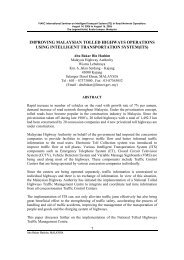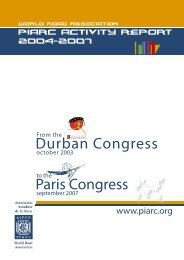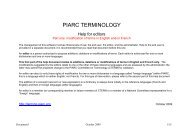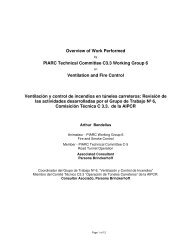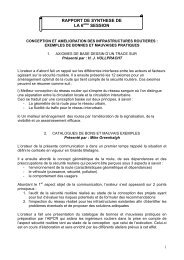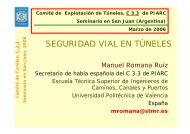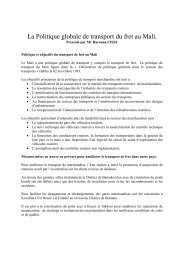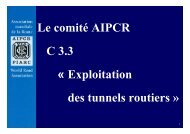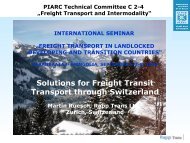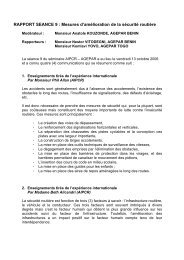General proceedings - Association mondiale de la Route
General proceedings - Association mondiale de la Route
General proceedings - Association mondiale de la Route
Create successful ePaper yourself
Turn your PDF publications into a flip-book with our unique Google optimized e-Paper software.
greater part is from a World Bank credit. At least 40% of a project cost must be for wages<br />
and at least 40% of the workers must be women. The Local Government Authorities provi<strong>de</strong><br />
supervision for the projects. Communities had the liberty to choose whatever projects they<br />
nee<strong>de</strong>d and 65% of them were road projects. Communities have benefited by getting access<br />
and employment in the road projects, which has reduced poverty in their areas. People<br />
employed in the projects have <strong>de</strong>veloped skills but <strong>la</strong>ck of simple equipment has remained a<br />
big challenge to implementing road works.<br />
Highlights of the presentation:<br />
• Communities contribute at least 20% of project costs.<br />
• At least 40% of workers are required to be women.<br />
• At least 40% of project costs must be for wages.<br />
• The projects have created employment and provi<strong>de</strong>d access roads that have assisted<br />
reduce poverty in the rural areas.<br />
• Communities have <strong>de</strong>veloped skills in <strong>la</strong>bour-based technologies for road works.<br />
• Simple equipment are essential for success implementation of roadworks using <strong>la</strong>bour<br />
based technology.<br />
Title: Sustainable Road Financing in Developing Countries: A Pragmatic Cost -<br />
Revenue Mo<strong>de</strong>l<br />
Authors: Charles Amoatey, Dr. F. Weiler, A. Wagner, Dr. S. Thielmann<br />
Presenter: Charles Amoatey (pictured), Research Assistant, University of Stuttgart,<br />
Germany<br />
The presentation was on a pragmatic cost-revenue<br />
mo<strong>de</strong>l for estimating road network costs and road<br />
sector revenues. Ghana and Namibia were used as<br />
case studies where it was observed that in spite of<br />
their revenues being able to meet the maintenance<br />
needs, they were only able to finance 76% and 43%<br />
of the life cycle costs respectively. It was also<br />
observed that only about half of the road user<br />
contributions in Ghana went to roads. The presenter<br />
states that it is important to have performance indicators to measure road sector performance<br />
in terms of revenue generation and allocation and its coverage. It is estimated that 1.5 -3.0%<br />
and 4.5 – 6% of GDP allocation would be nee<strong>de</strong>d for annual maintenance and network life<br />
cycle costs respectively. The presenter recommends reduction of the size of road networks to<br />
an affordable size in cases where funding is ina<strong>de</strong>quate.<br />
Highlights of the presentation:<br />
• The cost-revenue mo<strong>de</strong>l is <strong>de</strong>veloped in MS Excel software.<br />
• Maintenance needs including Backlog are <strong>de</strong>termined using unit costs for different<br />
activities and an administrative cost of 5% of the total road costs is assumed.<br />
• The mo<strong>de</strong>l ignores contributions from Donors since it focuses on internal generated funds<br />
i.e. road users paying for the services and general budget allocations to the roads sector.<br />
39



